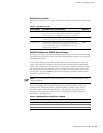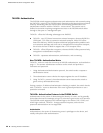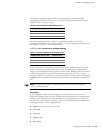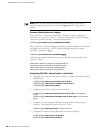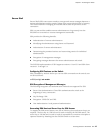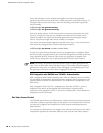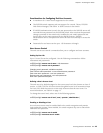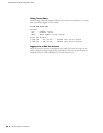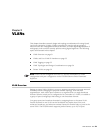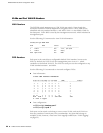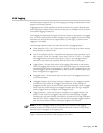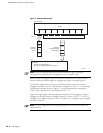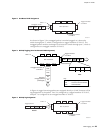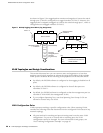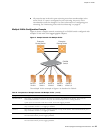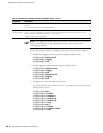
VLAN Overview 21
Chapter 2
VLANs
This chapter describes network design and topology considerations for using Virtual
Local Area Networks (VLANs). VLANs commonly are used to split up groups of
network users into manageable broadcast domains, to create logical segmentation of
workgroups, and to enforce security policies among logical segments. The following
topics are discussed in this chapter:
VLAN Overview on page 21
VLANs and Port VLAN ID Numbers on page 22
VLAN Tagging on page 23
VLAN Topologies and Design Considerations on page 26
Private VLANs on page 29
VLAN Overview
Setting up virtual LANs (VLANs) is a way to segment networks to increase network
flexibility without changing the physical network topology. With network
segmentation, each switch port connects to a segment that is a single broadcast
domain. When a switch port is configured to be a member of a VLAN, it is added to
a group of ports (workgroup) that belong to one broadcast domain.
You group ports into broadcast domains by assigning them to the same VLAN.
Frames received in one VLAN can be forwarded only within that VLAN, and
multicast, broadcast, and unknown unicast frames are flooded only to ports in the
same VLAN. The EX2500 switch supports jumbo frames, up to 9,216 bytes.
NOTE: VLANs can be configured from the CLI. See the information on VLAN
configuration and port configuration in the EX2500 Ethernet Switch Command
Reference.



